Star formation
Star formation (or star birth) remains a highly theoretical astrophysical process believed to give birth to new stars. Materialistic astronomers assume that stars form through purely natural processes and are continually forming throughout the universe. This view is derived form the presupposition that the universe is ancient, and furthermore the observation that stars die periodically as supernovae. Since stars still exist in some number today, new stars must be replacing older stars in a continuous cycle commonly known as the stellar life cycle.[1]
Three hypotheses have been put forth to explain their origin:
- Stars form from enormous clouds of gas which collapse under their own gravity;
- Stars form from enormous clouds of gas which collapse during the supernova of a nearby star;
- Stars were deliberately designed;
The first two theories of star formation are plagued by two types of problems: manufacturing facts from theories, and theories which violate basic laws of physics and chemistry. Creationists conclude that the last option is the only viable option to date.
Young earth creationist scientists assert that materialistic explanations of the origin of stars are errant and contra-evidence and reports of stars forming are invalid.[1][2][3] In addition, creationist cite the secular scientific literature in order to make the case that materialistic explanations of star formation are inadequate.
Protostar
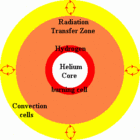 |
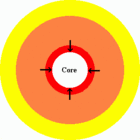 |
 |
Scientists posit that protostars (stars which have just begun their lifecycle) condense out of a cloud of dust and gas called a nebula.
Emission nebula are frequently described as stellar nurseries, some of which are said to contain enough dust and gases to form as many as 100,000 stars the size of the sun. The are called emission nebula because they occur near extremely hot, bright stars, which energizes the gas atoms of the nebula and enables the mass to emit light.[4]
This "stellar life cycle" is based on the Standard Solar Model (pictured at right). In accordance with the theory, naturalistic astronomers claim to have seen protostars, such asL1551. The existence of L1551 is beyond question. But the issue of whether it is actually a protostar as predicted by the theory is a whole other question.
The facts are these:
- L1551 is a binary system containing two small stars;
- The system is surrounded by a cloud of gas;
- The system is ejecting a stream of plasma at high speed;
From these facts, naturalistic scientists conclude that the stars are being born, while creationists conclude that the system is dying.
Protostar model
The stellar life cycle predicts that protostars will have material falling into them, as the star gains mass and energy. But L1551 has jets of gas flowing out of it, and there is no hard evidence to indicate that the star is coalescing. This is contrary to the predicted behavior of a protostar, but consistent with the predicted behavior of a dying binary system. Further, because gas is shooting out of the system, the cloud of gas surrounding the system (labeled a "nebula") is more reasonably understood to be a cloud of expelled gas.
Dying system model
A different interpretation of the same facts holds that the system is not a "protostar," but actually a system nearing the end of its lifecycle.
According to the Standard Solar Model, when a star uses up its nuclear fuel and the core starts to cool, it collapses. Initially this collapse gives the star a new source of fuel by fusion of helium into heavier elements, but eventually even this runs out resulting in the final collapse of the star's core.
This collapse causes a shock wave that violently blows the star apart. For smaller stars like our sun this would result in a planetary nebula with a white dwarf in the center; for larger stars it results in a supernova. These predicted facts are observed in the L1551 system.
Helioseismology
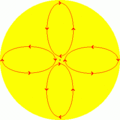 |
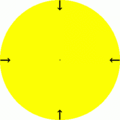 |
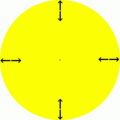 |
- Main Article: Helioseismology
Helioseismology data suggests the possibility that at least some stars are far more homogeneous than indicated by the Standard Solar Model. Since the violence of a Standard Solar Model star's death is associated with the collapse of its core, a Homogeneous Stellar Model star would die far less violently.
When such a star runs out of fuel, the entire star starts to collapse. While this too would produce a shock wave, it would not be as intense as in a Standard Solar Model star.
The result would be a significant outgassing forming a nebula such as is observed in L1551. The conclusion is that the objects labeled as "protostars" are actually dying homogeneous stars.
Implications
As is often the case, the scientists here have manufactured facts from theories, concluding that this system is composed of two "protostars," when the facts are more consistent with its being a dying binary system.
Naturalistic Theories
Two naturalistic theories of star formation have been proposed:
- Slow accretion of stellar material under its own gravity;
- Supernovae causing gravitational collapse in nearby stellar material and leading to star formation.
Both of these theories violate basic laws of physics and chemistry.
Slow gravitational collapse and the ideal gas law
The slow gravitational collapse model holds that a star's fuel collapses gradually under its own gravity. However, this model is physically impossible, because gas spreads indefinitely in a vacuum, because its expansion pressure outweighs its gravity.
The Ideal gas law states:
- pV=nRT
where: p is the pressure; V is the volume; n is the number of moles; R=0.0821 L atm mol-1 K-1 (that is, R is the gas constant); T is the temperature.
According to this law, which we all learned in high school chemistry: where nRT is finite (as it always is for any given amount of gas), and pressure approaches zero (as it is in the vacuum of space), V approaches infinity. That is, a gas will spread indefinitely in a vacuum.
Further, as T increases (as it must if a hydrogen cloud is to grow warmer on its way toward fusion), the expansion pressure of the gas cloud will increase. In other words, the warmer the hydrogen cloud gets, the more it will spread.
Stars do not and cannot arise spontaneously; this is a matter of basic 9th grade chemistry. Something or someone always gives birth to every star.
The Sun
- Main Article: Sun
Fusion cannot occur at temperatures less than 10 million degrees celsius. The sun currently burns at a temperature of 15 million degrees celsius. There is a great deal of disagreement as to the pressure at the center of the sun, although all sources seem quite confident in their assertions. Estimates range from 9.9x 10^8 to 3.5x10^11 at the moment.
For our purposes, let's assume the low-end temperature and pressure: that a hydrogen cloud in space at a pressure of 9.9x10^8 and a temperature of 10 million degrees celsius will undergo fusion.
How did this hydrogen gas get so concentrated as to reach these temperatures and pressures?
Impossibilities:
- "Gas slowly collecting under its own gravity in space," as many of us were taught in school. This is a physical impossibility, as demonstrated by the ideal gas law.
Remaining possibilities:
- A nearby supernova pressure wave triggered gravitational collapse;
- Some intelligent agent triggered gravitational collapse.
Supernova hypothesis
According to the supernova hypothesis, gravitational collapse is caused by the explosion of a nearby star, which supposedly creates an enormous pressure wave which initiates fusion.
Problems with this model:
- Why did the enormous hydrogen gas cloud violate the gas law by coming to collect in space prior to the explosion when, as indicated above, hydrogen spreads in a vacuum?
- The gas cloud would have to have been very close to the nearby star in order to receive enough pressure to initiate fusion, and must have been an enormous cloud of gas in order to provide fuel for the new star. Why did the solar wind from the enormous nearby star not "blow away" the gas cloud during its multi-billion-year life cycle?
- The primary effect of explosions is to scatter nearby matter, rather than to concentrate and pressurize it. Why did the supernova not "blow away" the nearby gas cloud as would be expected in a massive explosion, but instead cause it to collapse and even spontaneously begin to rotate and develop planets?
- If stars originate spontaneously from fallout from explosions throughout a near-eternity of time, why do they appear almost exclusively in enormous galaxies with spiral-shaped arms or ellipses? From whence the artistic organizing principle?
- If every star originated from another supernova, and supernova remnants by their very nature last millions of years, then where are all the supernova remnants?
- If every star was caused by the death of a prior star, from whence the older star?
- The Milky Way experiences one supernova about every 25 years. Such remnants should last millions of years. Only approximately 200 supernova remnants are visible. That's consistent with 5000-7000 years of supernovae. It's totally inconsistent with millions of years. Where are all the supernovae? Davies, K., Distribution of supernova remnants in the galaxy, Proceedings of the Third International Conference on Creationism, vol. II, Creation Science Fellowship (1994), Pittsburgh, PA, pp. 175-184.
- How could the delicate harmony of the Golden ratio in the planets develop if the sun and planets originated with a massive and chaotic explosion?
The supernova hypothesis appears to be difficult to accept.
Conclusion
There remains one viable possibility, which is that somebody or something intentionally designed stars. Following the supernaturalistic explanation as Psalm 19:1 states: The heavens declare the glory of God; the skies proclaim the work of his hands.
Quotes
| “ | “We don’t understand how a single star forms, yet we want to understand how 10 billion stars form.” Carlos Frenk, as quoted by Robert Irion, “Surveys Scour the Cosmic Deep,” Science, Vol. 303, 19 March 2004, p. 1750. [5] | ” |
| “ | “Nobody really understands how star formation proceeds. It’s really remarkable.” Rogier A. Windhorst, as quoted by Corey S. Powell, “A Matter of Timing,” Scientific American, Vol. 267, October 1992, p. 30. [5] | ” |
| “ | "The process by which an interstellar cloud is concentrated until it is held together gravitationally to become a protostar is not known. In quantitative work, it has simply been assumed that the number of atoms per cm3 has somehow increased about a thousand-fold over that in a dense nebula. The two principal factors inhibiting the formation of a protostar are that the gas has a tendency to disperse before the density becomes high enough for self-gravitation to be effective, and that any initial angular momentum would cause excessively rapid rotation as the material contracts. Some mechanism must therefore be provided for gathering the material into a sufficiently small volume that self-gravitation may become effective, and the angular momentum must in some way be removed." Eva Novotny, Introduction to Stellar Atmospheres and Interiors, Oxford University Press." | ” |
| “ | "Not all gas clouds in the Milky Way can form stars at all times. More often than not, the cloud is confused about what to do next. Actually, astrophysicists are the confused ones here. We know the cloud wants to collapse under its own weight to make one or more stars. But rotation as well as turbulent motion within the cloud work against that fate. So, too, does the ordinary gas pressure you learned about in high-school chemistry class. Galactic magnetic fields also fight collapse: they penetrate the cloud and latch onto any free-roaming charged particles contained therein, restricting the ways in which the cloud will respond to its self-gravity. The scary part is that if none of us knew in advance that stars exist, front line research would offer plenty of convincing reasons for why stars could never form.", Niel deGrasse Tyson(astrophysicist and Frederick P. Rose director of the Hayden Planetarium at the American Museum of Natural History), Death by Black Hole: And Other Cosmic Quandries, W.W. Norton & Company. p187, 2007 | ” |
| “ | "Contemporary opinion on star formation holds that objects called protostars are formed as condensations from the interstellar gas. This condensation process is very difficult theoretically, and no essential theoretical understanding can be claimed; in fact, some theoretical evidence argues strongly against the possibility of star formation. However, we know that the stars exist, and we must do our best to account for them. Brandt, John. The Physics and Astronomy of the Sun and Stars. McGraw Hill Publishing Company, 1966.[6] | ” |
| “ | "The formation of stars is one of the most fundamental problems in astrophysics, as it underlies many other questions, on scales from the formation of galaxies to the formation of the solar system. ... No current model can reproduce all of the observations." Derek Ward-Thompson (Professor, Director of Jeremiah Horrocks Institute of Maths, Physics and Astronomy, University of Central Lancashire), Isolated star formation: From cloud formation to core collapse, Science 295(5552):76-81, 4 January 2002. | ” |
| “ | "The truth is that we don't understand star formation at a fundamental level." Abraham Loeb (Frank B. Baird Jr. Professor of Science at Harvard University), quoted in Chown, M., Let there be light, New Scientist 157(2120):29-30,1998. | ” |
News
- Galaxy Cluster Stuns Scientists—Supermassive and Spewing Out Stars Galaxy cluster possibly more massive than any other known, claimed to be forging fresh stars nearly a thousand times faster than normal (though no stars are even visible at that distance). National Geographic News, August 15, 2012.
References
- ↑ 1.0 1.1 New Stars, New Planets? by Donald B. DeYoung, Acts & Facts, Apr 1 1996.
- ↑ Are stars forming? by Ron Samec. Creation 19(1):5 December 1996
- ↑ 61. Star Births? Stellar Evolution? In the Beginning: Compelling Evidence for Creation and the Flood, by Dr. Walt Brown.
- ↑ Worldbook at NASA: Nebula by the U.S. Aeronautic and Space Administration.
- ↑ 5.0 5.1 62. Galaxies In the Beginning: Compelling Evidence for Creation and the Flood, by Dr. Walt Brown.
- ↑ Brandt, John. The Physics and Astronomy of the Sun and Stars. McGraw Hill Publishing Company, 1966.

